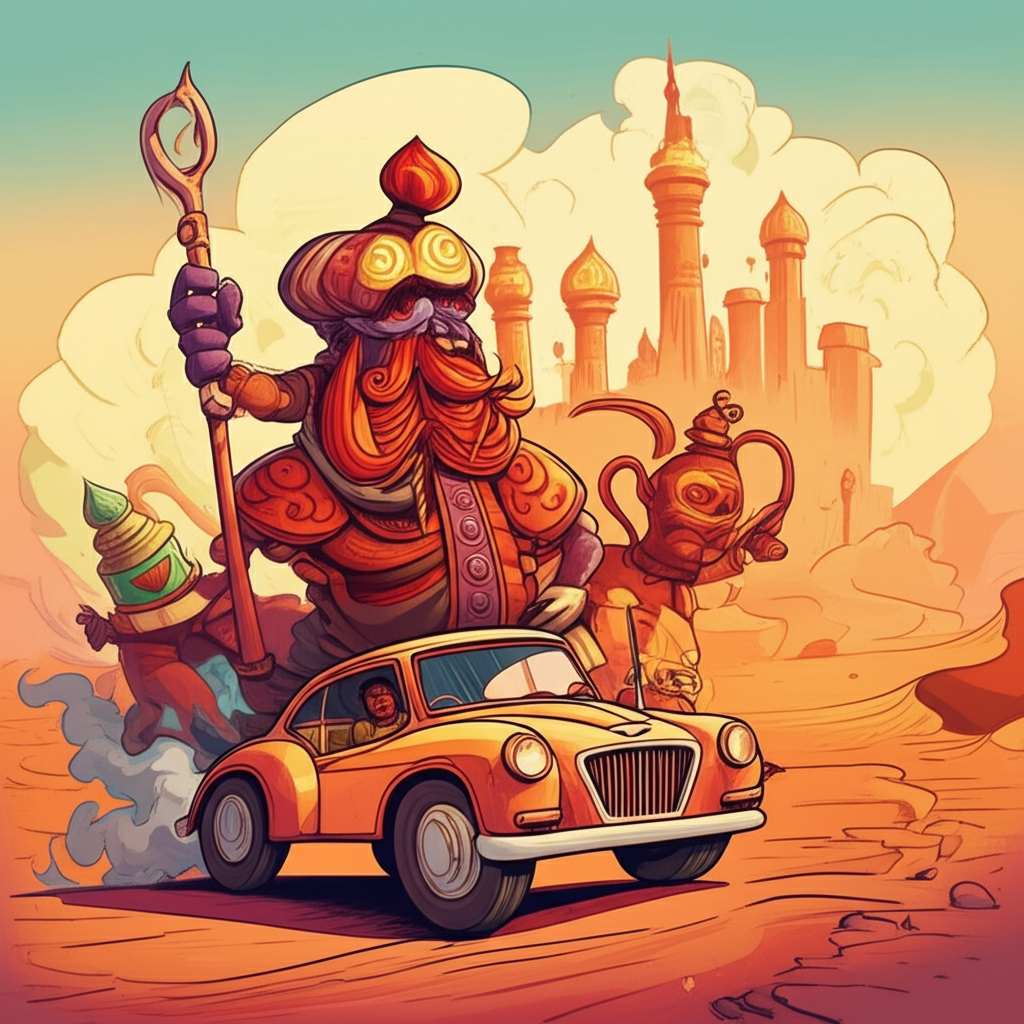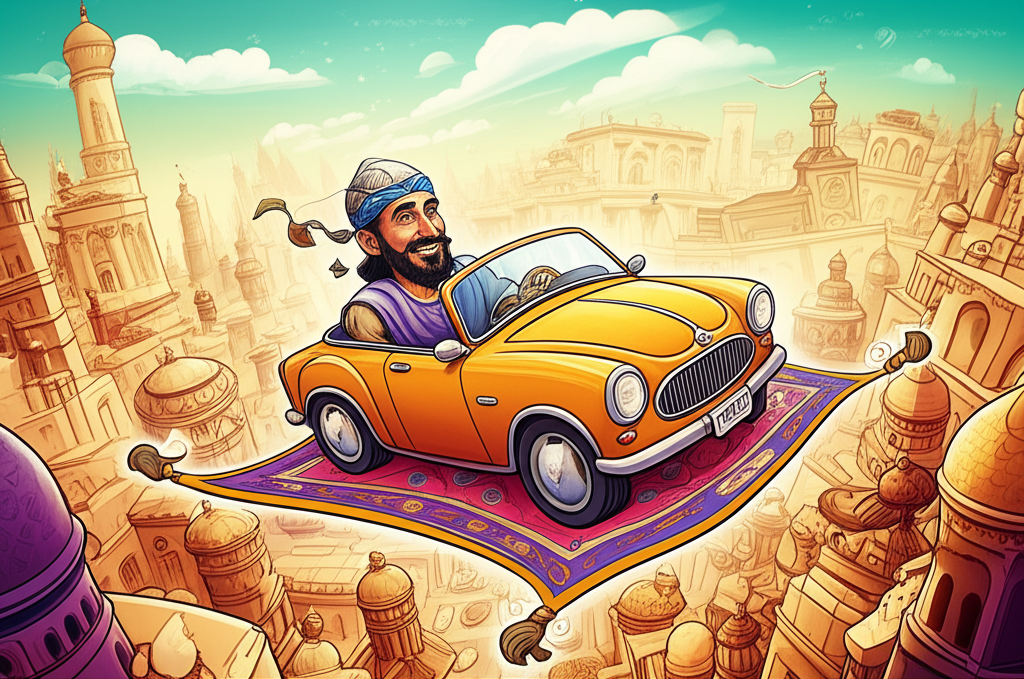
The vast, shimmering expanse of the Rub’ al Khali, the Empty Quarter, is a landscape that has long commanded awe and inspired a profound sense of mystery. For millennia, across the Arabian Peninsula, tales have been spun under starlit desert skies, weaving narratives of its origins that speak to the human desire to understand the untamed forces of nature and the echoes of ancient civilizations. Among these captivating stories, one of the most enduring is the legend of the City of Brass, a mythical metropolis said to be the progenitor of this colossal desert. This is not a tale of historical fact, but a rich tapestry woven by the imagination of ancient peoples, reflecting their worldview and their relationship with the formidable environment they inhabited.
The stories of the City of Brass and its connection to the Rub’ al Khali emerged from the heart of Arabian culture, a region deeply intertwined with the desert’s rhythms. The Bedouin tribes, who have traversed these arid lands for centuries, developed a profound understanding of its unforgiving beauty. Their lives were dictated by the scarcity of water, the relentless sun, and the ever-shifting sands. In an era before scientific explanations, the natural world was often personified, its grandest features attributed to the actions of mythical beings or the remnants of forgotten epochs. The world was perceived as a place where the divine and the earthly were intimately connected, where spirits and djinn (genies) could influence human affairs, and where the past held tangible, albeit hidden, power. The Rub’ al Khali, with its immense scale and apparent desolation, was a natural canvas for such potent narratives.
At the heart of this legend lies the City of Brass itself, a phantom metropolis whispered about in hushed tones. It is not described as a city built by human hands, but rather as a creation of beings of immense power, often attributed to the djinn or even to ancient, prideful kings who dared to challenge the divine order. Imagine structures of polished brass, gleaming under an eternal sun, with towering minarets that pierced the heavens. Its streets were said to be paved with gold and jewels, its palaces filled with untold riches, and its inhabitants possessing magical abilities. The very material – brass – itself carries symbolic weight. In many ancient cultures, it was associated with the sun, with strength, and with durability, but also with a certain artificiality, a creation that perhaps stood apart from the natural order. The City of Brass represented a pinnacle of worldly power and grandeur, a testament to a civilization that, in its arrogance, ultimately met a calamitous end.
The narrative of the City of Brass’s transformation into the Rub’ al Khali is a potent cautionary tale. The legend tells of a mighty king, often named Sulaiman (Solomon), or a lineage of powerful sorcerers, who constructed this magnificent city. They sought to create a kingdom unparalleled in its splendor and power, a testament to their ingenuity and dominion. However, their ambition apparently grew unchecked, leading them to transgress divine boundaries. Some versions of the story claim they enslaved djinn to build their city, forcing them to labor endlessly. Others speak of their hubris in believing they could rival the power of the heavens. In their ultimate act of defiance or profound error, a divine retribution befell them. The heavens themselves, or a powerful divine force, unleashed their fury. The brass city, the symbol of their earthly triumph, was cursed and buried beneath an unimaginable deluge of sand. The towering structures were swallowed, the gleaming streets vanished, and the magnificent metropolis was transformed into the vast, seemingly endless desert we know today. The Rub’ al Khali, therefore, is not merely a geographical feature but the petrified remnants of a fallen empire, a stark reminder of the impermanence of worldly power when pitted against a higher authority.
The symbolism embedded within this myth is multifaceted. The City of Brass can be seen as representing the allure and potential dangers of excessive ambition, pride, and the pursuit of material wealth. Its eventual destruction and burial by sand serve as a potent allegory for the ephemeral nature of human endeavors and the ultimate triumph of natural forces, or divine will, over transient glory. The Rub’ al Khali, in this context, becomes a sacred space, a monument to a forgotten transgression, and a warning to those who might follow a similar path. The vastness and emptiness of the desert can also symbolize a spiritual void, a consequence of the city’s downfall, or conversely, a space for introspection and a return to simpler, more profound truths.
In the modern era, the myth of the City of Brass has transcended its oral origins and found new life in various forms of media and academic study. It has been a recurring element in fantasy literature, particularly in stories set in Middle Eastern-inspired worlds, where it serves as a source of ancient lore, hidden treasures, and dangerous quests. In video games, the concept of a lost, magically protected city beneath the sands is a popular trope, offering players opportunities for exploration and discovery. Furthermore, cultural anthropologists and folklorists study these myths as invaluable windows into the beliefs, anxieties, and aspirations of the people who created them. They offer insights into how ancient societies interpreted their environment, their understanding of morality, and their relationship with the unseen forces they believed governed their lives.
It is crucial to reiterate that the tale of the City of Brass and its role in the formation of the Rub’ al Khali is a traditional story, a product of ancient storytelling and imaginative interpretation. It is a testament to the power of human narrative to explain the inexplicable and to impart moral lessons. As Muslims, we recognize that only Allah (God) is the true Creator and Sustainer of all existence, and that all earthly phenomena are by His divine will. This understanding places such myths firmly within the realm of cultural heritage and imaginative expression.
In conclusion, the myth of the City of Brass offers a compelling narrative that has shaped the perception of the Rub’ al Khali for generations. It is a story born from a deep connection with the desert, a desire to understand its immensity, and a worldview where the mythical and the real often intertwined. While not a literal account, its enduring presence in folklore and modern interpretations highlights the richness of cultural heritage and the timeless human impulse to craft stories that explore the boundaries of ambition, the consequences of pride, and the profound mysteries of the world around us. These tales, passed down through oral tradition, serve as a vital link to our past, reminding us of the power of imagination and the enduring legacy of human storytelling.





